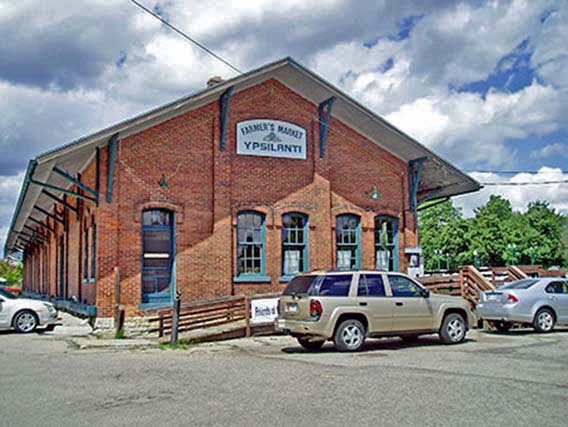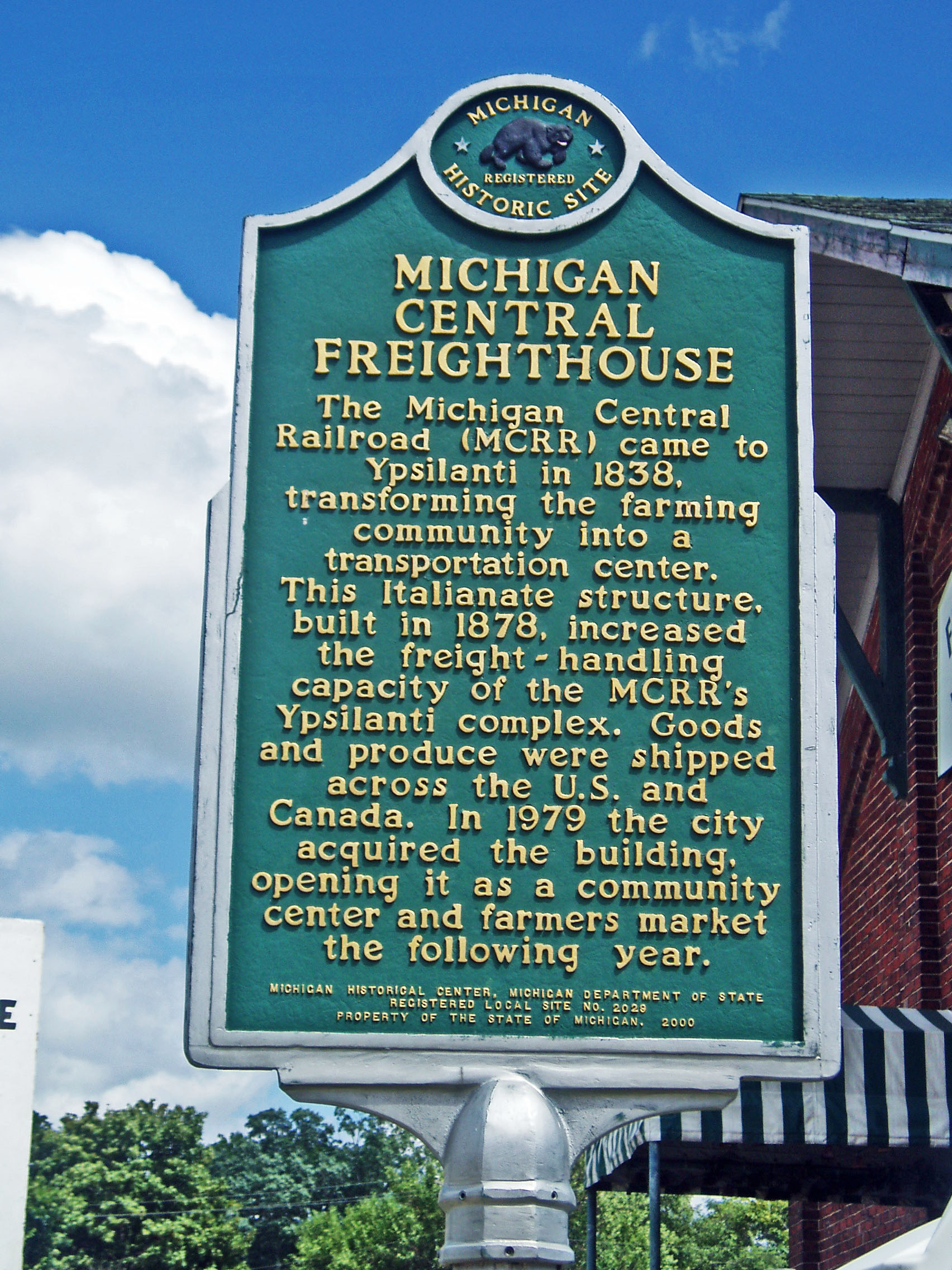

Why does Michigan have a major city named Ypsilanti? A small group of settlers came to this spot on the Huron River in 1823 and sought to become successful farmers. They called their location Woodruff’s Grove after one of the settlers. At this time, the territorial legislature was concerned about the names residents were selecting for their settlements. While some locations had been given by the French explorers, many of the new migrants from the east were the first whites to live in their area. They tended to name the sites after themselves or places they came from. In some instances, a name was used for several different settlements, even within the same county, so the territorial legislature encouraged people to be imaginative in selecting names for their villages.
In the early 1830s, it was time to find a new name for Woodruff’s Grove. Waterville and Palmyra were proposed, but the winner was Ypsilanti. Early in this nation’s history, the founders and their successors knew that the principals of our constitutional democracy came from the ancients Greeks. Thus, Hellenic ideals were esteemed. Thomas Jefferson presumed that monumental governmental building should resemble those constructed by the most accomplished architects of ancient Greece and Rome.
Beginning in about 1914, residents of Greece sought to free themselves from domination by Turks and the Ottoman Empire. Demetrius Ypsilanti was one of the military and political leaders of that independence movement. Indeed, he played a role similar to that of George Washington since Ypsilanti was both a military and political leader. On January 15, 1822, Ypsilanti was elected president of the Greek assembly, but the Turks did not relinquish their control without warfare. In 1828, Ypsilanti commanded Greek troops in East Hallas, and on September 29, 1829, he forced the Turkish forces led by Asian Bay to capitulate at the Pass of Petra, greatly helping to establish Grecian independence. The struggle continued for some years but by 1832 Greece was anindependent nation. Judge Augustus Woodward was among the most prominent and influential Michigan figures at this time and a man of great learning. He probably recognized that Ypsilanti and George Washington played similar roles in creating their nations so he suggested Woodruff’s Grove be renamed Ypsilanti. Thus, Michigan has one of the few American cities named for a prominent Greek hero.
Michigan became a state in 1837. Governor Steven Mason believed that the government should build railroads to stimulate economic growth. He used the credit of the state to borrow funds for railroad construction. That is, the state did not directly build the rail line, but bonds backed by the credit of Michigan were used in their construction. There is a very long story to be told about those arrangements since it proved difficult to borrow those funds. However, in late 1837 monies became available to construct a rail line west from Detroit toward the mouth of the St. Joseph’s River in Benton Harbor. Presumably, passengers and freight would travel by rail from Detroit to Lake Michigan and then sail to Chicago or other ports on Lake Michigan. The line from Detroit was completed to Dearborn in January, 1838 and to Ypsilanti the next month. Gradually, the line built west, reaching Ann Arbor in 1839, Marshall in 1844, Kalamazoo in 1846, and after substantial shifts in the original plans, Detroit was linked to Chicago by rail in 1855.
This rail line turned Ypsilanti from a isolated farming community into a city that was linked to Detroit, and eventually, to the rest of the country. Until trucks became the popular mode of local transport, small shipments went by rail, be they agricultural goods or farm products. Thus, every settlement along the rail lines needed a freight house where farmers and merchants would deposit the products they wish to ship away in box or baggage cars and pick up the items sent to them. This was known as LCL freight—less than carload lots. By the time of World War II, railroads pretty much ceased handling LCL freight. That business, however, explains the size of the freight station that you see.
The Michigan Central Railroad erected a simple frame structure as the Ypsilanti station in 1838, approximately on the site of the freight house that you see pictured above. This was razed in 1860 since the rail line built an impressive three-story Victorian style station on the north side of the tracks with an impressive and much embellished tower. The station that you see there today was cobbled together from the remnants of the marvelous station that the Michigan Central erected on the cusp of the Civil War. In 1910 a massive fire broke out in the third floor of the station where the agent had living quarters. It was rebuilt as a humble one and one-half story station. On August 10, 1939, a Michigan Central freight train derailed at this point and further damaged the station. When rebuilt, the station lacked its impressive tower and the large separate baggage room where the valises of travelers were once stored.
The Penn Central Railroad continued to operate one Ann Arbor-Detroit round trip for commuters after Amtrak took over rail passenger service on May 1, 1971. At a later point, Amtrak took over this Penn Central service and provided one Jackson-Detroit commuter round trip every day. That train stopped at the Ypsilanti depot, but such service terminated in 1984. Current plans call for the resumption of Ann Arbor to Detroit commuter trains in fall, 2010, trains that may once again use the Michigan Central Station. Ypsilanti was linked by rail to Detroit for a skein of 146 years. After a hiatus of just 26 years, such service may resume in 2010.
Demetrius Ypsilanti had a distinction that George Washington lacked. The Greek War of Independence was financially supported, to a large degree, by Manto Marvogenous, a very rich and highly educated woman of the Enlightenment from Trieste. She apparently inherited a fortune, a fortune she devoted to Greek independence. She was also assumed to be one of the most beautiful and powerful woman in Europe in the 1820s. She was apparently viewed as the trophy woman of her age by the titled European elite. Demetrius Ypsilanti became her very close personal friend and was, at one point, engaged to marry her. I don’t know if this accomplishment influenced Augustus Woodward. A statue honoring Demetrius Ypsilanti stands at the foot of the Ypsilanti Watertower but, so far as I know, there is no statue in town honoring Manto  Marvogenous.
Marvogenous.
Date of construction: 1878
Architect and Construction contractor: C. T. Douglas of Aurora, Illinois
Architectural Style: Italianate
State of Michigan Registry of Historic Sites: 20,706;
Listed July 17, 1992
State of Michigan Historical Marker: Put in place February 28, 2008. This highly visible marker is at the west end of the freighthouse.
Use in 2009: This is currently a well-maintained building used for private parties and civic events.
Photograph: August 21, 2009 Ren Farley